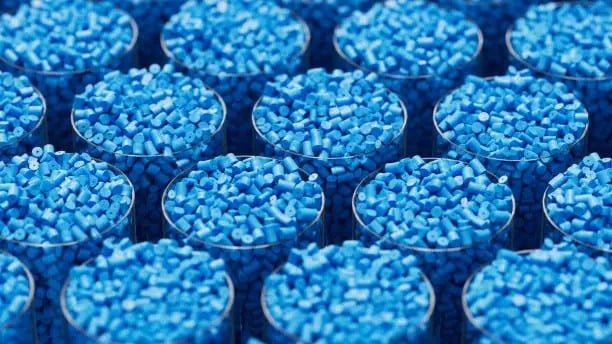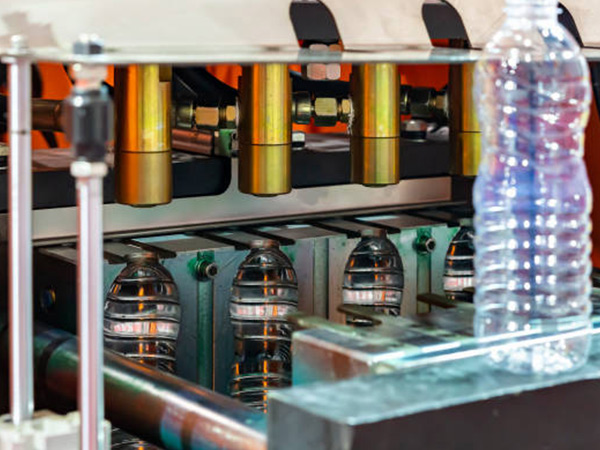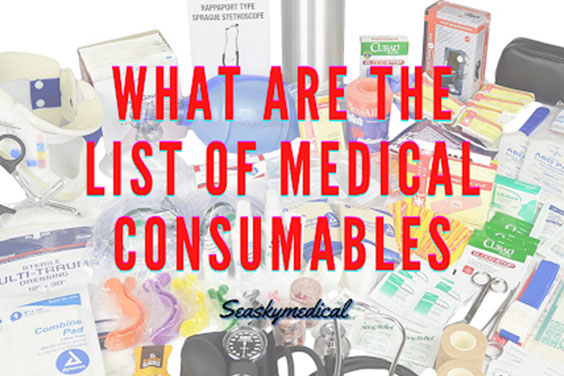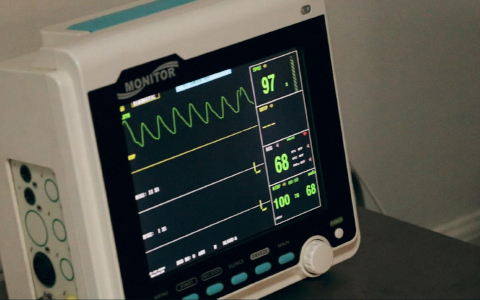Cyclic Olefin Copolymer (COC), containing high-volumes of polyethylene and polypropylene, is the most widely used member of the polyolefin family for both medical and packaging applications. The unique balance of properties in COC has made it a dominant material in advanced diagnostic, microfluidic applications, and in drug packaging and pharmaceuticals, where light-weight and purity are highly prioritized manufacturing conditions. In contrast to the heavy weight, fragility, and risk of contamination traditional glass and metal instruments are associated with, COC materials are optimal for light-weight and highly sterile operations. Common applications include blisters, pouches, microtiter plates, prefilled syringes, etc. Its low birefringence, in addition to other features, also makes it useful in electronic devices like antennas for communication; in optical components like lenses; and in laboratory equipment. Keep reading to learn all there is to COC plastic material for medical injection molding.
COC Material Characteristics
COC has unique characteristics that make it appropriate for drug and food packaging. Some qualities are discussed as flows:
- Transmittance: COC has a transmittance of ≥ 91% and haze < 0.5%, comparable to the imaging clarity of glass. It is the best solution for transmission in wavelengths as low as 220nm. The short-term UV transmittance of COC makes it ideal for disposable laboratory materials.
- Water absorption Rate: With an absorption rate of <0.01% (only 1/30 of PMMA), the COC polymer is appreciated for applications where moisture resistance and zero deformation in a humid environment are crucial. COC has moisture barrier properties that surpass polymers like polycarbonates and monomers such as Low-density polyethylene (LDPE).
- FDA Certification: Cyclic olefin copolymer can be FDA certified for food and drug contact. Medical-grade COC plastic material, FDA regulation number 21 CFR 177.1520. They also comply with ISO 10993 standards. FDA approval connotes that no dissolution and/or adsorption of active drug ingredients and other packaged substances.
- High fluidity: COC supports precise replication of 20μm microchannels (such as herringbone-shaped chip channels). The high fluidity of this polymer allows for improved injection molding of highly precise and minute medical materials like prefilled syringes.
- Strong heat resistance: COC plastic possesses a glass transition temperature (*T*<sub>g</sub>) range of 138–170°C and is resistant to gamma ray/ethylene oxide sterilization. This category of polymer also easily resists the polymerase chain reaction (PCR) when used in laboratory analysis.
- Hydrophilic COC (HydroCOC): COC is inherently water-repelling (hydrophobic), however, its low cost, transparency and biocompatibility makes it popular in the fabrication of microfluidic devices which requires its manipulation to become hydrophilic. For this to happen, the contact angle is reduced to 15° (standard COC is 85°), and direct injection molding realizes autonomous capillary flow of microfluids by plasma or UV treatment, etc.
Core advantages of COC Medical Injection Molding
COC plastic has several benefits over other copolymers as it pertains to medical injection molding. Discussed below are the core advantages:
- High transparency and Purity: COC polymer can replace glass in optical devices (such as detection windows) without the risk of leachables due to its optical transparency properties. The inert nature of COC also makes it suitable for maintaining the integrity of packaged substances like drugs and food.
- Chemical resistance: Cyclic olefin’s resistance to disinfectants (such as ethanol and hydrogen peroxide) makes it suitable for reusable instruments that need to be sterilized multiple times. It is also highly tolerant of acids, bases, and other organic solvents that may find use in medical diagnostics. The aggressive resistance offered by COC makes it ideal for encapsulating sensitive chemicals.
- Dimensional stability: COC exhibits low moisture absorption (<0.01%), which ensures long-term dimensional accuracy of precision parts (such as microfluidic chips). It exhibits volumetric precision lacking in most other resins. The excellent stiffness and low shrinkage properties of COCs make them resistant to stress cracking and other changes associated with long-term use. Most medical cuvettes are fabricated with COC due to such properties.
Raw Material Quality Control

Source: Unsplash
Quality control for raw material refers to the procedures involved in the analysis and verification of the inherent properties in the raw material to ensure compliance with industry and environmental regulations and optimal functioning. The application of COC plastic material in medical injection molding makes quality control crucial before product fabrication. Below are a few properties verified:
- Raw material selection and certification
- Biocompatibility: Medical-grade COCs must pass ISO 10993 biocompatibility testing and comply with USP Class VI or EP standards to ensure safety in contact with human tissues or drugs. In other words, the material must not cause any form of toxicity or immunological rejection in living tissues or cells. Further tests may be conducted, such as ISO 10993-17 testing to measure the level of leachable substance.
- Model adaptability: The unique blend of properties in the COC polymer allows for its versatility for diverse production needs. Select the model based on product requirements (e.g., high transparency for optical devices, chemical resistance for infusion devices). It is important to note that COC with a narrow molecular weight distribution has higher melt strength, which can reduce short shots and weld marks in thin-wall injection molding.
- Drying
Although COC has low hygroscopicity (<0.02%), it still needs to be treated in a hot air circulation dryer at 80–100°C for 3–6 hours, similar to other non-hygroscopic plastics like PE, PP, and PVC. Residual moisture can cause bubbles or silver streaks during injection molding, affecting product transparency and mechanical properties.
Production equipment and clean environment requirements
COC polymer, nowadays, is the preferred plastic solution for medical device fabrication, diagnostics, pharmaceutical packaging, and scientific analysis. The high sterile requirements of such applications warrant the production of COC in ultra-clean environments to ensure the safety of consumables packaged in it. Purity standards apply to both the production equipment and environment, as discussed below:
- Equipment cleaning and maintenance
- Dedicated cleaning process: COC plastic material works with injection molding machines with ultra-precision fittings like low-compression screws, open-type nozzles for fluid control, and a barrel for melting COC pellets. Before production, the barrel and screw must be thoroughly cleaned with PE cleaning material at a temperature 10–20°C higher than the COC processing temperature to avoid cross-contamination. Other appropriate cleaning agents (soaps and baking soda) can be used to eliminate stains and debris so as to maintain the sterility of the machines.
- Temperature control accuracy: Efficient temperature regulation is vital in the COC processing machine’s barrel, to avoid material deformation, growth contaminants, or debris accumulation. The error of the barrel temperature control system must be ≤±1℃, and the pressure control error must be ≤±5% to ensure stable melt fluidity.
- Clean room standards
- Injection molding of COC intended for medical-related consumables must be carried out in a clean room of ISO 7 (10,000) or above, with a temperature of 20–25°C and a humidity of 40–60%. Air filters must be changed regularly to mitigate microbial contamination. Also, personnel must wear sterile clothing and be disinfected by air showers before entering the production space.
Key Process Parameter Control
To accomplish the clarity and purity criteria in medical devices, the injection molding process of COC plastic material must be strictly regulated. Cyclic Olefin Copolymer (COC) is an advanced polymer material with special features, which includes transparency, moisture resistance, and dimensional accuracy. The molding technique of COC polymer can be achieved through adequate control of processing parameters such as temperature and pressure, to avoid errors and enhance uniformity across large volumes of production.
Pressure and Speed Control
- Injection pressure- The injection pressure influences how well the COC polymer fills the mold. High pressure, ranging from 120-150MPa, is essential for complex or thin-walled shapes. This ensures that the COC polymer fills the mold cavity appropriately, preventing incomplete fill or bubbles. For simpler shapes or components, a pressure range of 80-100MPa is adequate to avoid these related issues.
- Injection Speed- Injection speed (how the COC polymer moves in the mold) significantly influences the performance of the final components. A slow speed of 10-30mm/s at the mold gate prevents turbulence in flow and aids flow stability. Following the gate area, a higher speed of 50-100mm/s is required. This ensures faster filling, prevents bubbles, and ensures the polymer balances appropriately inside the mold. This approach yields optimal results, especially with the molding of transparent and detailed structures.
- Holding Pressure and Time- The amount of pressure and time required for the polymer to move inside the mold. Holding pressure is employed at the point of filling the material inside the mold cavity. COC plastic is processed at 60-80% of the injection pressure in 10-30 seconds, based on specifications of wall thickness. Thicker pieces require prolonged packing times to prevent inadequate fills and shrinkage cavities that can impair the function and aesthetics of the final product.
Temperature Control
- Barrel Temperature- The geometry of the component determines the temperature at which the COC plastic is processed. Thin-walled parts like microfluidic chips will use a temperature range of 260- 280°C to enhance flow rate and replication of fine products. Maintaining this temperature level reduces melting and allows the material to flow optimally. However, thicker parts use a range of 220-240°C to prevent sinks and deformation.
- Mold Temperature- Mold temperature also plays a key role. A range of 40-50°C is sufficient for fast cycle production, and this will aid the ejection process and reduce cooling time. However, it may cause internal stress; hence, it is not suitable for transparent components. Higher temperatures, like 60-80°C, are optimal for components that prioritize optical clarity and dimensional accuracy.
COC plastic yields uniformity and stress-free cooling times, which is important for some components in devices like optical lenses, intravenous systems, sensors, endoscope housings, and analytical instruments.

Source: iStock
Special Process
COC plastic material is utilized in advanced molding techniques to manufacture complex, small medical components that require high precision. Thin-wall molding and micro injection molding are two main techniques that use COC plastic.
- Thin Wall Molding- Employed for components with less than 1mm wall thickness, such as biosensor housings or diagnostic kits. The process uses a high melting temperature (greater than 260°C) with high injection pressure. These criteria ensure the liquid COC polymer fills every part of the mold cavity before it hardens.
- Micro Injection Molding- Used for producing ultra-small components that weigh less than 0.1g. In this procedure, complex machines with screw diameters ≤14mm and closed-loop servo systems ensure measurement accuracy, with a coefficient of variation ≤0.5%. This technology ensures quality and consistency in various parts, which is highly significant in medical applications like implant devices and microfluidic chips.
Quality Verification and Traceability
To ensure that the medical-grade COC products meet the stringent specifications of the healthcare industry, a stable system of process monitoring, sterility assurance validation, and full traceability is mandatory.
Process Monitoring
Meeting overall quality part demands starts from the production session. Continuous monitoring of crucial factors like barrel and mold temperatures, injection and holding pressures, and injection speed helps detect variations or anomalies before they impact product quality. Statistical Process Control (SPC) also facilitates real-time tracking of process stability, ensuring corrections are made on time and there is reduced or no waste and defects.
In addition, many producers now use AI-driven visual verification systems, such as ClearView or Cognex. These inspection systems can identify micro-defects or contamination as small as 5μm in translucent COC components, with detection accuracies of 99.97%. This precision level is significant for medical devices that optimize clarity, safety, and sterility.
Sterility Assurance Validation
Ethylene Oxide (EtO) or gamma irradiation is used for sterilizing COC plastic material after molding. Validation regulations test components through 20-50 sterilization cycles to ensure that these processes do not impair mechanical strength, dimension, clarity, or consistency when they are used.
Traceability and Compliance
A full documentation report should accompany products collection, from raw resin (identified with batch or melt numbers/ certificates), to processing parameters and sterilization reports- every step must be traceable and meet regulatory standards.
Medical Product Applications
The use of Cyclic Olefin Copolymer (COC) plastic material is on the rise as an alternative to other resins used in medical and diagnostic testing. The many properties that COC polymer offers make it applicable across medical and pharmaceutical products, providing efficient, and cost-effective systems. The following are some key applications where COC finds unique expressions:
- Prefilled Syringes- COC is used to substitute glass in preloaded syringes. Its ability to reduce full weight by over 50% eradicates the risk of breakage, offering high transparency for visual drug examination. Also, its resistance to chemicals guarantees there are no biological product interactions, making it a safer alternative for self-injectable therapies.
- Microfluidic Chip Substrates- COC’s visual clarity, minimal optical distortion, and precise shaping aid the formation of 20μm wide microchannels. These features enable consistent fluid handling, genetic testing, and near-patient testing, which are pivotal for timely disease detection.
- Insulin Pump Cartridges- COC polymer has enhanced the invention of drug reservoirs and valves with accuracy within 0.025mm, which is pivotal for management of chronic diseases like diabetes. This level of control helps in dispensing consistent insulin doses or other critical treatments.
- Endoscope Compartments and Optical Lenses- COC plastic material provides glass-like transparency in thin-walled optical devices, with over 91% visible light transmittance. The use of COC protects against cracking and discoloration, over time, making it fit for lenses, housing, and internal lighting used in diagnostic imaging tools.
- Degradable Bone Screws and Suture Anchors- In orthopedic care, COC is used together with biodegradable polymers like PLA to improve product shape, promote healing, provide optimal performance in bioabsorbable implants, and minimize the need for a corrective surgery.
- Needle Holder Housings for Hyaluronic Acid/ Botox Injections- COC’s resistance to cracks makes it a good fit for thin-walled injection pens or needle bases used in dermatology or aesthetics therapy. Also, COC’s water resistance ability prevents gummy biological drugs from sticking to device walls.
- Test Card Housings and Lens Windows- For clarity and moisture stability in single-use test cards, point-of-care (POCT) diagnostic tools use COC polymer because of the consistency it offers for reagent performance in any environment.
- Intravenous (IV) Components and Dialysis Connectors- The high purity level of COC polymer significantly lowers the risk of leachables in ports, IV lines, syringes, and dialysis cartridge components. Its sterilization ability and dimensional accuracy improve the safety of patients during intravenous treatment,
dialysis, or blood purification.
- Laboratory Equipment- Reusable or single-use laboratory equipment like reagent trays and petri dishes maintains its durability after many uses because of COC’s chemical resistance and conformity with gamma or EtO sterilization.
- Bioassay Consumables (Microtiter Plates)- Plates used in ELISA and other bioassays benefit from COC because of its reduced autofluorescence and low extractables, which help to minimize background interference and produce reliable results.
- Pharmaceutical Packaging (Bottle Caps and Vials)- With the moisture barrier and chemical inertness COC provides, it ensures protection of sensitive drug formulations, and no interaction or reaction with the drugs or biological contents used in the caps and vials, therefore, extending shelf life and potency.
Conclusion
Cyclic Olefin Copolymer (COC polymer) stands tall in use for medical injection molding because of its biocompatibility, outstanding optical clarity, chemical and heat resistance, and structural stability. With these features, COC helps in the production of top-notch advanced devices like microfluidics, diagnostic devices, optical pieces, and parenteral drug delivery systems.
COC is suitable for mass production with precision because of its compatibility with thin-wall and micro injection molding processes. With the steady innovations in medical technology, COC shows outstanding performance as a crucial material for safe, sterile, and high-quality healthcare applications.




